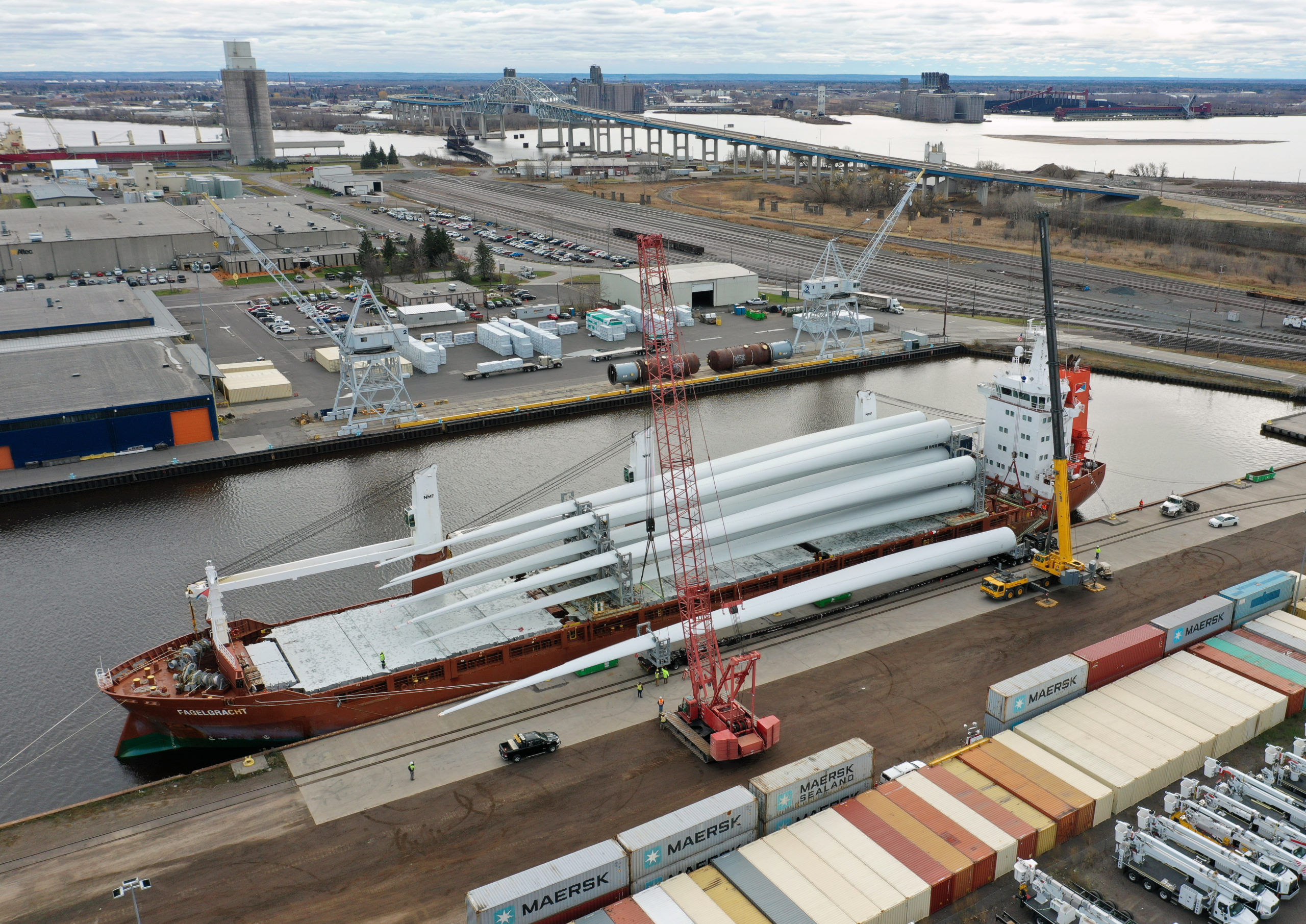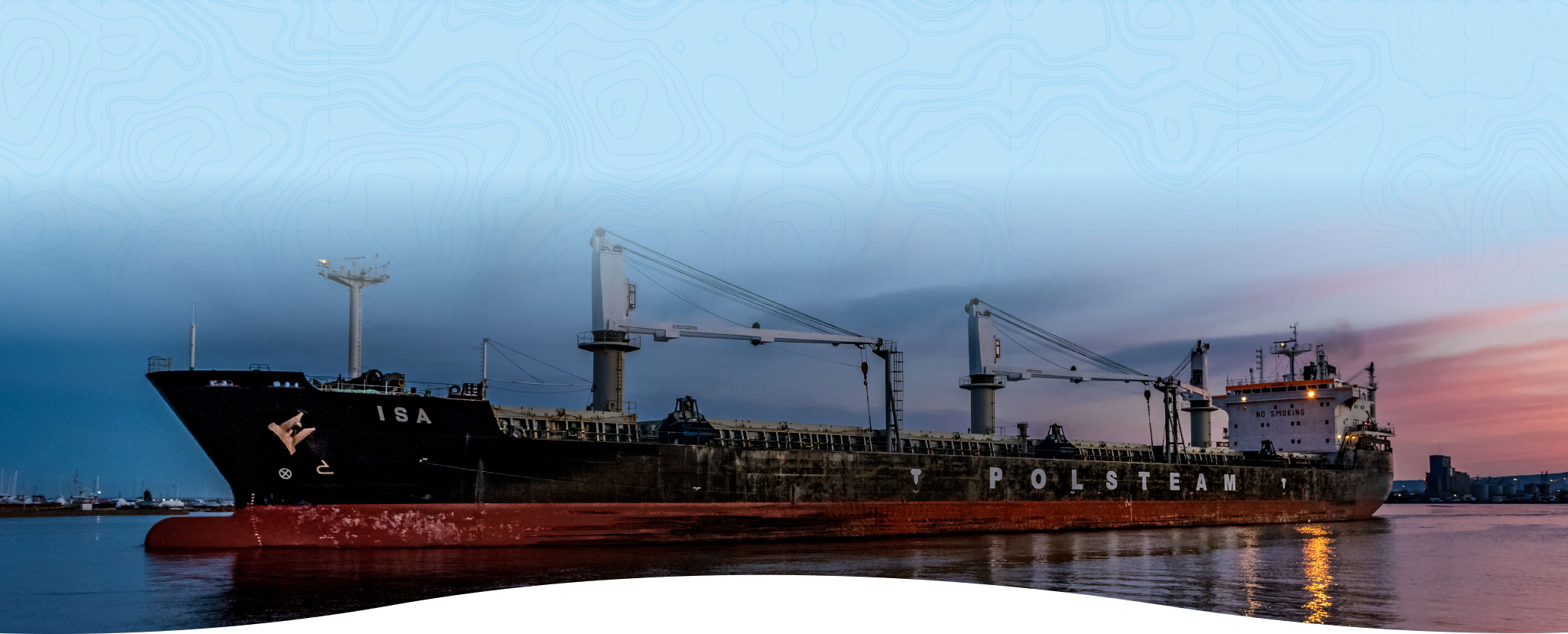
DULUTH, Minn. — Despite its biggest January throughput since 2010 (1.34 million short tons), total maritime tonnage for the Port of Duluth-Superior finished the 2022 navigation season down 7.6 percent compared to 2021 and down 7 percent against the five-season average.
Some 30.4 million short tons of cargo transited the port this season, including nearly 19 million tons of iron ore, which finished within 2.3 percent of the five-season average. Almost 970,000 tons of iron ore sailed from the port in January, which was the largest January iron ore float for Duluth-Superior since the Duluth Seaway Port Authority shifted to electronic record-keeping in 2003. Approximately 16,000 tons of that ore sailed for export aboard the 1953-built lake freighter Saginaw, which left Superior, Wisconsin, on Jan. 21 at 4:20 p.m. as the latest departing ship from the Port of Duluth-Superior since 1975. Saginaw crossed Lake Superior and offloaded the iron ore in Sault Ste. Marie, Ontario, at the Algoma Steel facility located just above the Soo Locks (the locks closed Jan. 16). That shipment was part of more than 5.5 million tons of iron ore that sailed from Duluth-Superior for export during the 2022 season, a 1.9 percent year-over-year increase.
General cargo tonnage provided the season’s biggest highlight, much of it the high, wide and heavy ilk, for example, 260-foot wind turbine blades, a 125-ton Yankee dryer for ST Paper in West Duluth, and other huge industrial pieces that Duluth Cargo Connect received via ship or barge and then moved to sites throughout North America. That general cargo tonnage total more than quadrupled the five-season average, finishing at nearly 118,000 tons, the most for Duluth-Superior since 1986.
Salt tonnage, up 26 percent compared to 2021, and cement tonnage, down from a massive 2021 but still almost 6 percent above the five-season average, also emerged as 2022 highlights, as did the debut of maritime container shipping through Duluth Cargo Connect, which opened a new line of efficient cargo import and export for regional manufacturers, producers and retailers.
Coal and grain posted the season’s biggest declines, down 13 percent and 20.3 percent, respectively, compared to 2021. It was the port’s smallest grain throughput since 1890.
Even with the difficult season for grain, beet pulp pellets emerged as a highlight. Duluth-Superior exported 150,000 tons of beet pulp pellets this season, which was the most since 2014 and an 85 percent increase over last season.
“Grain is a very dynamic commodity in terms of supply, demand, pricing and routing, and the port faced a number of headwinds in 2022, including two years of tightening grain supplies worldwide, further exacerbated by the war in Ukraine, a very strong dollar, extremely elevated transportation costs and competition from other countries’ less expensive wheat,” said Deb DeLuca, executive director of the Duluth Seaway Port Authority.
“On the positive side, 2022 was a terrific season for general cargo tonnage, and while it doesn’t offset grain or coal in total tonnage, those general cargo shipments deliver outsized economic value per ton in comparison, and they also support development of regional industry and greener energy sources, so they represent a big win for our port and our region.”
###
Approximately 800 vessels and 35 million short tons of cargo move through the Port of Duluth-Superior each year, making it the Great Lakes’ largest tonnage port and one of the nation’s top 20. The Port supports nearly 8,000 jobs and contributes $1.4 billion in business revenue to the regional economy. Learn more at DuluthPort.com.

